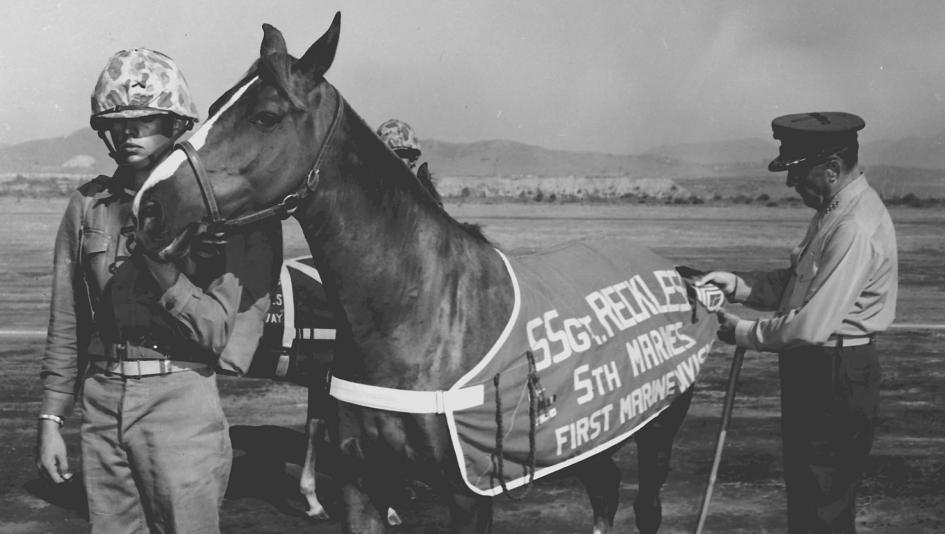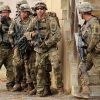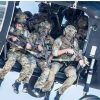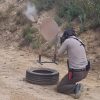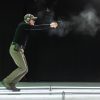In March 1953, as the Korean War raged on, the Chinese launched a fierce assault against three critical outposts held by U.S. Marines. The frontlines erupted with a relentless barrage of rifle fire, mortars, and artillery as hundreds of Chinese soldiers stormed the hills in a desperate attempt to overrun the American positions.
The battle was brutal. Smoke choked the air. Tracer rounds lit up the sky in both directions. Wounded Marines were carried back while the fallen remained scattered across the blood-soaked terrain. Amid this chaos, a small but mighty figure emerged—one that no one expected to survive.
Marine Sgt. Harold Wadley watched in disbelief as a petite horse trudged up a shell-torn hill, burdened with heavy 75mm recoilless rifle rounds. “I didn’t think she’d live five seconds,” he recalled. But she did. Again and again.
That horse was Sgt. Reckless, a Mongolian mare who would go on to become one of the most celebrated animal heroes in U.S. military history.
Born for Battle: The Origins of Sgt. Reckless
Originally purchased for just $250 from a young Korean boy—who sold her to help buy an artificial leg for his sister—Reckless quickly became a part of the Marine Corps family. Though she had a Korean name, it was difficult for the Marines to pronounce, so they renamed her “Reckless,” after their unit’s radio call sign.
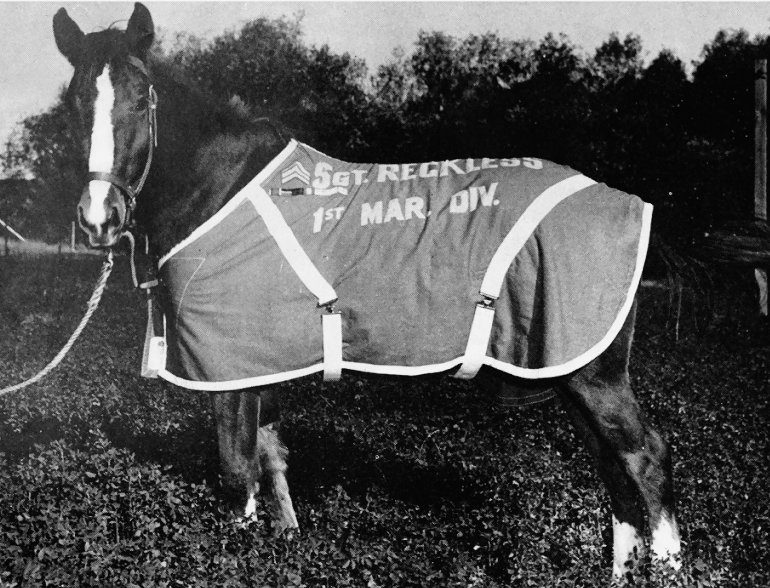
She bonded deeply with the troops, often poking her head into their tents and helping herself to anything from Tootsie Rolls to scrambled eggs. She even shared in their beer rations and had a habit of hovering around poker games, occasionally munching on poker chips.
But Reckless wasn’t just a mascot—she was a Marine.
A Warhorse Like No Other
During the five-day Battle of Outpost Vegas, Reckless performed beyond anyone’s imagination. She made 51 solo trips in a single day under heavy enemy fire, delivering vital ammunition to the recoilless rifle crews. Altogether, she carried 386 rounds—over 9,000 pounds of ammunition— across more than 35 miles of rugged terrain.
Often, she navigated the battlefield alone, guided by memory and instinct. She learned how to duck under barbed wire and lie flat during enemy shelling. Through it all, her unit never stopped firing—thanks in large part to her.
“Reckless was the only Marine with four legs,” said Wadley during a commemorative ceremony decades later.
Honoring a Legend: Sgt. Reckless Remembered
In 2013, under clear skies near the National Museum of the Marine Corps, a bronze statue of Sgt. Reckless was unveiled by Marine Gen. James Amos. The larger-than-life tribute stands as a permanent reminder of her courage and service.
About a dozen Marines who served with Reckless, including the now 79-year-old Wadley, were present at the unveiling. The ceremony marked the 60th anniversary of the end of the Korean War—a conflict too often referred to as the “Forgotten War.”
Retired Lt. Gen. Robert Blackman, president of the Marine Corps Heritage Foundation, shared his hope that Sgt. Reckless’s story will rekindle public interest in the sacrifices made during that pivotal time.
From Battlefield to American Icon
After the war, the Marines brought Reckless to the United States, where she became a beloved symbol of bravery. She appeared on television shows, featured in national magazines, and received numerous military honors, including two Purple Hearts.
Reckless spent her final years at Camp Pendleton in California, where she died in 1968. Her legacy, however, lives on—through her statue, her story, and the Marines who never forgot her.
